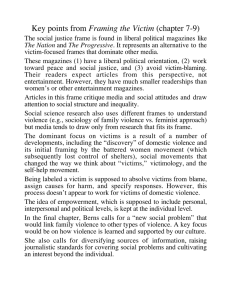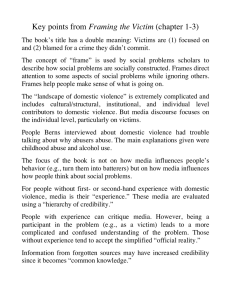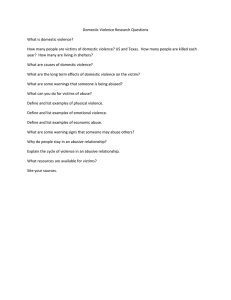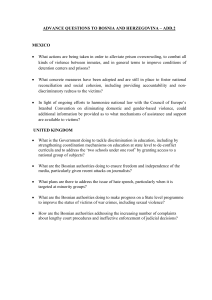Framing the Victim
advertisement
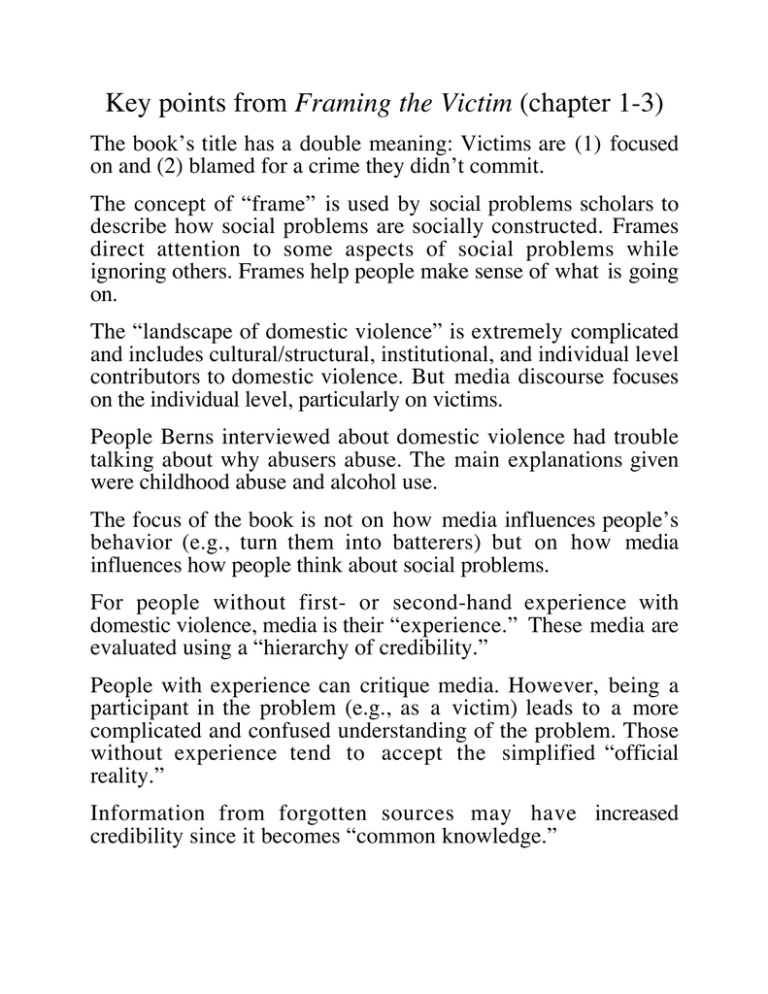
Key points from Framing the Victim (chapter 1-3) The book’s title has a double meaning: Victims are (1) focused on and (2) blamed for a crime they didn’t commit. The concept of “frame” is used by social problems scholars to describe how social problems are socially constructed. Frames direct attention to some aspects of social problems while ignoring others. Frames help people make sense of what is going on. The “landscape of domestic violence” is extremely complicated and includes cultural/structural, institutional, and individual level contributors to domestic violence. But media discourse focuses on the individual level, particularly on victims. People Berns interviewed about domestic violence had trouble talking about why abusers abuse. The main explanations given were childhood abuse and alcohol use. The focus of the book is not on how media influences people’s behavior (e.g., turn them into batterers) but on how media influences how people think about social problems. For people without first- or second-hand experience with domestic violence, media is their “experience.” These media are evaluated using a “hierarchy of credibility.” People with experience can critique media. However, being a participant in the problem (e.g., as a victim) leads to a more complicated and confused understanding of the problem. Those without experience tend to accept the simplified “official reality.” Information from forgotten sources may have increased credibility since it becomes “common knowledge.”
